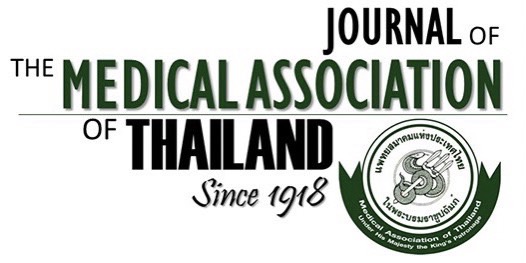Clinical Characteristics, Endosonographic Findings and Etiologies of Gastroduodenal Subepithelial Lesions: A Thai Referral Single Center Study
Varayu Prachayakul MD*, Pitulak Aswakul MD*, Supot Pongprasobchai MD*, Nonthalee Pausawasdi MD*, Thawatchai Akaraviputh MD**, Tassanee SriprayoonMD*, Asada Methasate MD**, Udom kachintorn MD*
Affiliation : * Siriraj GI Endoscopy Center, Siriraj Hospital, Department of Internal Medicine, Faculty of Medicine, Mahidol University, Bangkok, Thailand ** Siriraj GI Endoscopy Center, Siriraj Hospital, Department of Surgery, Faculty of Medicine, Mahidol University, Bangkok, Thailand
Objective : The present study was undertaken to evaluate the demographic data, Endoscopic UltraSonography (EUS)
characteristics of the sub-epithelial lesions, pathology results, complications and long term follow-up of the patients whom
referred for EUS evaluation at Siriraj Hospital.
Material and Method: From January 2008-June 2011, a total of 61 cases was referred for EUS evaluation due to sub-
epithelial lesions. The endoscopic reports, pathology results and the patients’ medical records were reviewed. The present
study was approved by Siriraj Institutional Review Board.
Results : A total of 61 patients were referred for evaluation of subepithelial lesions, 6 of them were excluded. Thus, 55 cases
were analyzed. The mean age was 57.7 + 13.8 years (27-87 years). Sixty seven percent were female. Only one-third of the
patients had symptoms. The provisional diagnosis of the sub-epithelial lesions, regarding only clinical and endosonographic
characteristics were GIST, neuroendocrine tumor (NET), pancreatic rest, lipoma, granular cell tumor and others (70.9%,
9.1%, 9.1%, 3.6%, 3.6% and 3.6% respectively). All the lesions were diagnosed as GIST originating from either the forth
layer (97.4%) or the second layer (2.6%) of gastric or duodenal wall. Fine needle aspiration (FNA) was performed in 13
patients (23.6%). The positive predictive value, negative predictive value and accuracy of diagnosis of GIST made by
endosonographers based on only endosonographic characteristics were 85, 100 and 86% (95% CI: 62.4%-94.4%) respectively.
Conclusion : Most of the subepithelial lesions which were referred for EUS evaluation at Siriraj Hospital were GISTs. The
diagnosis of GIST can be accurately made by using the EUS based on only endosonographic characteristics. FNA should be
done for the large sized GIST. For small sized GIST (< 3 cm), FNA might not be beneficial but a 1 year interval follow-up with
EUS is recommended.
Keywords : Endoscopic UltraSonography, Sub-epithelial, Submucosal, Mass, Lesion, GIST



